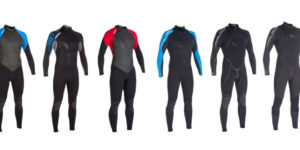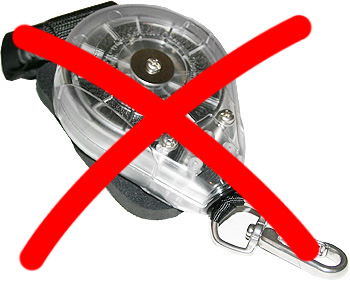Kites

As a beginner, you need a kite that has:
- Plenty of depower.
- Is easy to relaunch on the water.
- Does not turn too quickly.
Like many sports, kiting equipment is often specifically designed for one style / discipline of the sport.
Styles that are bad for beginners:
- Freestyle / Wake style / Big air – Often referred to as “C” kites. These are designed for extremely fast turning and agility. They often have very limited depower. This is a huge disadvantage for beginners and intermediates, and can even be dangerous.
- Foil / Race – These are designed for extreme performance. They are absolutely no good for beginner or intermediate riders.
Styles that are OK / good for beginners:
- Surf – Surf kites are designed for drifting. They are normally easy to relaunch, but are not great at going up wind. These are OK as beginner kites, but not ideal.
- Beginner – Schools often use kites that are specifically designed for beginners. They are really easy to fly and relaunch. However, they are very heavily built and low performing. This is OK for your first kite, but you will quickly out grow it.
- Freeride – The do a bit of everything kites. These are not specifically aimed at beginners, but are normally fairly easy to fly and relaunch. They also have enough performance in all disciplines that you can progress. This is the style that we recommend.
Kite size
Ideally, you should have 2 kite sizes, so that you can safely kite in a variety of wind speeds. We would recommend the following sizes, depending on your weight:
- 50-65 kg: 6 + 10m2
- 65-80 kg: 9 (or 10) + 12m2
- 80-95 kg: 10 + 14m2
If you only have the budget for one kite, either:
- Get the bigger of the two kites above, with the intention to buy the smaller one at a later date. This means that you will only be able to kite in light winds in the beginning.
- Get a size in-between the two sizes above, and only kite in medium strength winds.
You may find that as you progress, you want more options. Many intermediate riders will have 3 or even 4 sizes to choose from.
Boards

As a beginner you want to look for:
- Normal straps (not strapless or boots)
- Twin tip (you can ride the board in both directions)
- Finns (normally 4 small fins, one in each corner of the board)
- A handle in the middle of the board.
As with the kites, boards come in various styles.
Styles that are bad for beginners:
- Wave / directional – These boards are designed to go in one direction only. If you wish to ride the other way, you either have to turn the board under your feet or ride on your toes. These are most definitely not for beginners.
- Foil boards – These boards float out of the water, balanced on a flying wing that sits in the water. These are incredibly hard to ride and are absolutely not for beginners.
- Freestyle / Wake style / Big air twin tips – If they have boots, then they are not for beginners. If they have no fins, they are no good for beginners. But if they have normal foot straps, fins, and a handle in the middle of the board then they will be OK.
Styles that are OK / good for beginners:
- Beginner twin tips – Schools often use boards that are specifically designed for beginners. They are really easy to ride. However, they are very heavy, large and underperforming. This is OK in the beginning, but you will quickly outgrow it.
- Freeride twin tips – The do a bit of everything boards. They have enough performance in all disciplines that you can progress. This is the style that we recommend.
Board size
The bigger the board, the easier it will float on the water. That is why beginner boards are huge. However, these large boards will not offer you much progression.
We recommend that you go for a standard board size for an intermediate rider. Check out the guidelines on the manufacturers websites, they will have recommendations based on your height and weight.
Wetsuits / boots / gloves etc

To ensure a good fit, it is always best to try on a wetsuit before you buy it. In Stavanger there are many places to buy wetsuits. In addition to www.srfsnosk8.no many of the regular sports shops sell wetsuits.
In Stavanger, a 5/4 mm suit will be good all year round. If you get cold easily or want to kite through the winter, you will need a 6/5 mm.
Don’t buy a board leash!

They are dangerous. Even the models that claim to be safe.
If you don’t believe us, we dare you to type “board leash injury” into google and click on images.
Also check out this excellent article discussing board leashes in fine detail:
https://kitesurfculture.com/blog/8/The-easiest-way-to-get-injured-while-kiteboarding-Kiteboard-Leash
The upwind body drag is an easy skill to master. It makes you a much better and more independent rider and completely replaces the need for a dangerous board leash. On your kite course you should have learnt to body drag up wind. If you need a reminder, check out this video:
If you still are not convinced, then here is an alternative gadget that will replace the need for a dangerous board leash:
